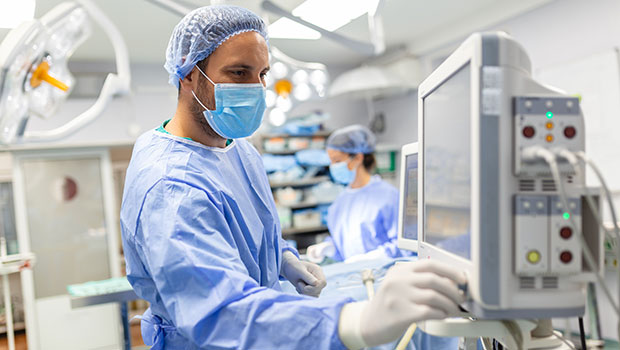Comparative Safety and Effectiveness Research
Comparison of Unibody and Non-Unibody Endografts for Abdominal Aortic Aneurysm Repair (SAFE-AAA)
The SAFE-AAA study was designed with the Food & Drug Administration to provide a longitudinal assessment of the safety of unibody aortic stent grafts, as these specific stent grafts have raised concerns about higher risk of adverse events compared to other commercially available stent grafts. This retrospective cohort study evaluated whether unibody aortic stent grafts are non-inferior (NI) to non-unibody stent grafts with respect to the composite primary outcome of aortic reintervention, rupture and mortality among Medicare beneficiaries. Findings from these studies contributed to label changes for this device and are now published in Circulation.
Safety Assessment of Inferior Vena Cava Filters Insertion and Retrieval for Prevention of Pulmonary Embolism (SAFE-IVC)
The FDA-supported SAFE-IVC study represents, to date, the largest real-world analysis conducted on the safety and efficacy of a widely used medical device that had previously lacked definitive evidence to uphold its use. Inferior vena cava filters (IVCF) have been used for decades to prevent venous thromboembolism (VTE), but clinical studies on IVCF's ability to prevent intermediate endpoints of VTE, such as pulmonary embolism (PE), and mortality have had conflicting results. This retrospective cohort study sought to evaluate temporal trends and practice patterns in the lifecycle of the IVCF device and to assess long-term outcomes of IVCF insertion, particularly among patients who did not undergo IVCF retrieval. Findings from this study, published in JAMA, offer a promising contribution to IVCF research.
Safety Assessment of Femoropopliteal Endovascular Treatment with Paclitaxel-coated Devices (SAFE-PAD)
The SAFE-PAD study aims to evaluate the long-term safety of paclitaxel-coated devices compared with non-paclitaxel-coated devices for femoropopliteal artery revascularization among a broad, real-world population of Medicare beneficiaries with peripheral artery disease. This multi-year analysis represents an ongoing mechanism to evaluate the safety of paclitaxel-coated devices in real world practice. This project was completed in 2024 and is awaiting publication. Click here to watch a video of Eric Secemsky, MD, explaining the latest results.
Safety Assessment of Endovascular Revascularization for Patients with Critical Limb-Threatening Ischemia (SAFE-CLTI)
The SAFE-CLTI study sought to characterize practice patterns and temporal trends of endovascular revascularization treatment within a diverse population of Medicare beneficiaries suffering from critical limb-threatening ischemia (CLTI), a complication of PAD, with the goal of determining the treatment's efficacy and safety endpoints. This was an observational retrospective study that utilized vast, multi-year datasets to best assess treatment outcomes. To learn more about Dr. Secemsky's work on CLTI, see the press release published by the Society for Cardiovascular and Angiography Interventions.
Health Services and Patient-Oriented Outcomes Research
Socioeconomic and Racial Disparities in the Treatment of Peripheral Artery Disease
This study, led by Anna Krawisz, MD, used Medicare fee-for-service data to evaluate incidence and outcomes of peripheral endovascular intervention (PVI). Results published in Circulation showed that black adults had substantially higher population-level PVI incidence and were significantly more likely to experience adverse events after PVI than white adults.
Temporal Trends, Practice Variation, and Associated Outcomes with IVUS Use During Peripheral Arterial Intervention
Associated Outcomes with IVUS Use During Peripheral Arterial Intervention
Led by Dr. Secemsky and Dr. Sanjay Divakaran, this retrospective study on intravascular ultrasound (IVUS) use in Medicare beneficiaries undergoing lower extremity peripheral arterial intervention (PVI) found that IVUS use during PVI increased from 2016 to 2019, particularly in ambulatory surgery center (ASC)/office-base laboratory (OBL) settings. The study also found that use of IVUS during PVI was associated with a lower risk of major adverse limb events. For further results, see the paper published in JACC: Cardiovascular Interventions.
Comparative Outcomes of PCI for ST-Segment Elevation Myocardial Infarction (STEMI) among Medicare Beneficiaries with Multivessel Coronary Artery Disease
This study, led by Dr. Secemsky alongside trainees Dr. Neel Butala and Dr. Aishwarya Raja, aimed to provide conclusive findings on the use of multivessel percutaneous coronary artery intervention (MV PCI) for STEMI patients. Their vast nationwide analysis suggests that there is no benefit of MV PCI by 1 year among older STEMI patients, indicating that outside of trials, the clinical benefit of MV PCI is not afforded to all patients equally. To read more about this study, see the paper published in Circulation: Cardiovascular Interventions.

